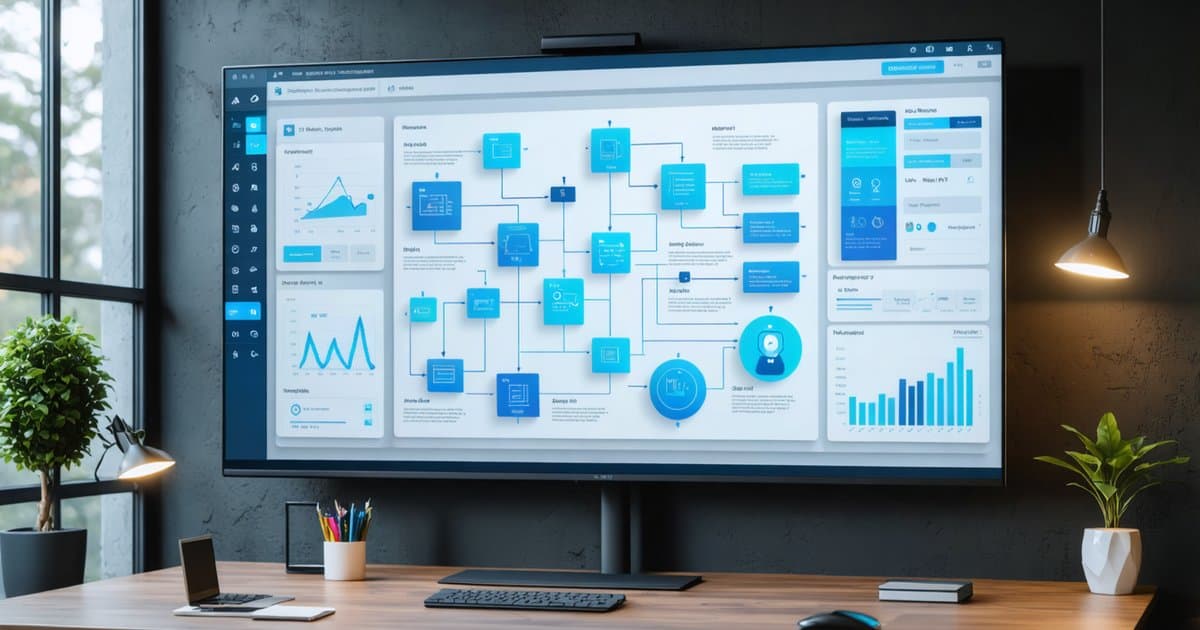In the digital era, conversations around sustainability often revolve around physical goods, renewable energy, and transportation. Yet, one of the most pervasive and often overlooked contributors to our carbon footprint lies in an unlikely place: the internet. From streaming services to complex websites and massive data centers, our digital lives have a significant environmental cost. As websites grow in complexity and data demands rise, energy consumption increases, contributing to greenhouse gas emissions.
This is where sustainable web design comes into play. It is an emerging discipline that seeks to balance performance, usability, and environmental impact. By focusing on energy-efficient design and development techniques, it aims to reduce the carbon footprint of websites without compromising functionality or user experience. In this article, we explore the core principles, benefits, challenges, and actionable strategies of sustainable web design to help developers and businesses build a more eco-conscious digital world.
What is Sustainable Web Design?
Sustainable web design refers to the practice of designing and developing websites with minimal environmental impact. This involves a combination of energy-efficient coding, optimized media assets, low-impact hosting solutions, and thoughtful user experience (UX) design. The goal is to reduce the amount of energy consumed by websites during both development and daily operation.
It’s important to understand that every element of a website, from images and animations to server requests and tracking scripts, consumes energy. Sustainable web design doesn’t just focus on the user interface but on the entire lifecycle of a website—from hosting infrastructure to end-user device performance.
Why Digital Sustainability Matters
With over 5 billion internet users and trillions of websites globally, the carbon footprint of the web is staggering. Data centers that store and deliver website content are estimated to consume 1-2% of the world’s electricity. As internet traffic continues to grow exponentially, so does its environmental impact.
If the internet were a country, it would be among the top five global emitters of carbon dioxide. This startling fact underscores the urgent need to prioritize sustainability in web development practices.
Key Principles of Sustainable Web Design
To effectively implement sustainable practices, web designers and developers can focus on several core principles:
1. Optimize Images and Media
High-resolution images and videos are among the largest contributors to web-related energy usage. Optimizing media reduces file sizes, speeds up page loads, and decreases bandwidth consumption.
-
Use next-gen formats like WebP and AVIF.
-
Implement lazy loading to defer offscreen images.
-
Compress files using tools like TinyPNG or ImageOptim.
-
Serve appropriately scaled images for mobile and desktop devices.
2. Efficient, Minimal Code
Clean, lightweight code minimizes the amount of work browsers and servers need to do.
-
Eliminate unnecessary JavaScript and CSS.
-
Use modular frameworks instead of heavy libraries.
-
Minify files and remove redundant dependencies.
-
Embrace static site generators for low-resource websites.
3. Green Hosting Providers
Your hosting provider plays a major role in your website’s sustainability profile.
-
Choose providers that run on renewable energy or offer carbon offsets.
-
Consider local data centers to reduce data travel distance.
-
Look for certifications like Green Web Foundation or B Corporation status.
4. Design for Speed and Usability
Faster websites not only improve UX but also consume less energy.
-
Prioritize navigation clarity and logical content structure.
-
Reduce click depth by presenting key information up front.
-
Use caching and CDNs (Content Delivery Networks) to decrease latency.
5. Implement Dark Mode and Energy-Efficient Colors
Dark backgrounds on OLED screens use significantly less energy.
-
Offer a dark mode option for energy-conscious users.
-
Use system color themes and contrast standards for accessibility.
-
Stick with simple, readable color schemes that avoid high-energy animations.
6. Limit Tracking and Third-Party Scripts
Tracking scripts and analytics tools increase load times and energy use.
-
Audit and reduce third-party scripts.
-
Use privacy-first, lightweight analytics alternatives (e.g., Plausible, Fathom).
-
Load scripts asynchronously to reduce blocking time.
Techniques for Measuring Digital Carbon Footprint
Understanding the actual impact of your website is essential for improvement. While measuring exact energy consumption can be complex, several tools can offer actionable insights:
-
Website Carbon Calculator: Estimates carbon emissions per visit.
-
Ecograder: Provides sustainability scores and recommendations.
-
Google Lighthouse: Audits performance and suggests improvements.
These tools help identify resource-heavy elements and offer practical suggestions for greener alternatives.
Benefits of Sustainable Web Design
Investing in sustainable web practices offers more than just environmental advantages. Here are some compelling reasons to adopt this approach:
1. Improved SEO Performance
Google prioritizes fast-loading websites with a good user experience. Sustainable sites naturally rank higher due to their lightweight structure and fast response times.
2. Better User Experience
Users abandon websites that take more than 3 seconds to load. Sustainable design practices like optimized media and efficient code help reduce bounce rates and boost engagement.
3. Lower Operational Costs
Smaller file sizes and optimized hosting lead to lower bandwidth usage and reduced hosting expenses over time.
4. Accessibility and Inclusivity
Lighter websites load better on slower connections, making them more accessible in regions with poor internet infrastructure.
5. Brand Reputation and CSR
Environmentally conscious practices enhance brand image, particularly among younger audiences and environmentally aware consumers.
Challenges in Implementing Sustainable Web Design
Despite its advantages, sustainable web design faces a few obstacles:
1. Resistance to Change
Clients may prioritize flashy visuals or legacy design trends over sustainability, requiring education and advocacy from designers.
2. Lack of Standardized Metrics
The absence of industry-wide sustainability benchmarks makes it harder to set clear goals and measure progress.
3. Balancing Aesthetics and Efficiency
Creating visually appealing websites with low environmental impact demands creativity and a deep understanding of design constraints.
4. Time and Budget Constraints
Sustainable practices might require additional upfront planning and development, which some stakeholders may resist.
Best Practices and Actionable Tips
Ready to go green with your next project? Here’s a step-by-step guide:
-
Plan Strategically: Outline clear goals for performance and environmental impact during the planning phase.
-
Choose Lightweight Frameworks: Go with static site generators like Hugo or Eleventy over bulky CMS systems when possible.
-
Audit Regularly: Continuously test site performance using tools like Lighthouse, GTmetrix, or Pingdom.
-
Educate Clients and Stakeholders: Communicate the long-term benefits of sustainability in cost savings, SEO, and brand value.
-
Iterate and Improve: Sustainability isn’t a one-time fix—continually optimize based on data and new best practices.
Case Studies in Sustainable Web Design
Organic Basics
A sustainable fashion brand, Organic Basics created a low-impact website that uses minimal resources, blocks unnecessary third-party scripts, and gives users a choice to view a low-energy version of the site.
Mozilla
Mozilla’s websites emphasize performance and privacy. They minimize tracking and heavy media files while hosting with sustainable providers.
Mightybytes
A digital agency known for its commitment to sustainability, Mightybytes provides clients with carbon audits and builds eco-conscious digital products.
These examples prove that sustainability and high performance can coexist beautifully.
The Future of Web Design is Green
The shift towards sustainable web design is not just a trend—it’s a necessary evolution. With climate change becoming an increasingly urgent global issue, every industry must do its part. The tech world, including web development, cannot remain an exception. By making conscious choices about design, hosting, and content delivery, we can reduce digital pollution and pave the way for a greener internet.
Conclusion: Creating a Digital Experience That Doesn’t Cost the Earth
As the digital space continues to expand, embracing sustainability is no longer optional. Sustainable web design offers a clear path toward reducing our environmental footprint while enhancing site performance, improving user experience, and building a more inclusive digital environment.
From image optimization and lean coding to renewable hosting and user-centric layouts, every decision matters. Whether you’re a freelancer, agency, business owner, or developer, integrating eco-friendly principles into your web projects contributes to a healthier planet.
It’s time to ask not just what our websites do—but what they cost in energy and emissions. By leading with intention and responsibility, we can build a digital future that is as mindful as it is innovative.
Take the Next Step: Join the Sustainable Web Movement
Sustainable web design is no longer a niche concept—it’s becoming a cornerstone of responsible digital development. Whether you’re a designer, developer, business owner, or agency leader, your choices in how websites are built and hosted have real-world implications. The great news is that transitioning to greener practices doesn’t have to be overwhelming. In fact, it often begins with a few small steps that collectively make a big impact.
Start Today:
- Audit your existing website using tools like Ecograder or Website Carbon Calculator to understand your baseline footprint.
- Switch to a green host if your current provider doesn’t offer renewable energy options.
- Update heavy content like unoptimized images or legacy scripts that slow down performance and inflate data use.
- Advocate for change in your workplace or with your clients by making the case for sustainability in web projects.
At its heart, sustainable web design is about aligning your digital presence with broader environmental values. It’s a reflection of your brand’s commitment to both innovation and social responsibility. When users see that your website is efficient, fast, and eco-conscious, it builds trust—and trust translates to loyalty.
Ready to Lead by Example?
If you’re interested in optimizing your current site for sustainability, or starting a new project with eco-friendly principles in mind, we’re here to help. Our team specializes in performance-driven, user-focused, and environmentally responsible design solutions.
→ Contact us today for a free consultation and start your journey toward a cleaner, greener web presence.
Let’s collaborate to ensure the future of the internet is as sustainable as it is powerful. Because every kilobyte saved matters—and so does your impact.

